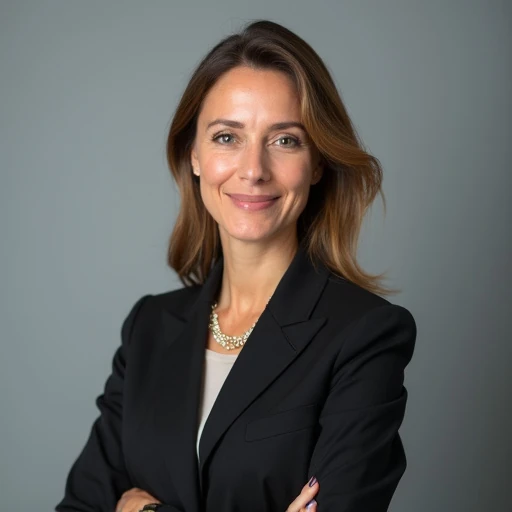Real estate mogul Ben Mallah has detailed a wealth-building strategy he claims generates “infinite returns” by systematically recovering his initial investment from properties while retaining ownership and cash flow. The method relies on a cycle of property improvement, refinancing, and reinvestment, a technique that has fueled his portfolio growth for over three decades.
Key Takeaways
- Ben Mallah utilizes a strategy known as the BRRRR method (Buy, Rehab, Rent, Refinance, Repeat) to pull his initial investment out of a property through refinancing.
- He describes the return as "infinite" because he continues to receive cash flow from a property in which he no longer has his own capital invested.
- Mallah combines this with the 1031 tax exchange rule, allowing him to defer capital gains taxes by reinvesting sale proceeds into new properties.
- His investment portfolio focuses on "necessity real estate," such as properties housing dentists, restaurants, and grocery stores, which are resilient to online competition.
Decoding the 'Infinite Return' Strategy
At the heart of Ben Mallah's investment philosophy is a powerful cycle of acquiring, improving, and leveraging real estate assets. During a recent discussion, he explained his core approach to building wealth without tying up capital long-term.
“Every time I had a property, I improved it and I went and I increased the value in it, I would refinance it,” Mallah stated. He emphasized that this is a non-taxable event which allows him to “pull my money out of it and still cash flow.”
This process is widely known in real estate circles as the BRRRR method, which stands for Buy, Rehab, Rent, Refinance, and Repeat. An investor purchases a property, renovates it to increase its market value (a process called forced appreciation), rents it out to generate income, and then refinances the mortgage based on the new, higher valuation.
How the Method Works in Practice
A cash-out refinance allows an investor to secure a new, larger loan that pays off the original mortgage. The difference between the new loan amount and the old mortgage balance is given to the investor as cash. Since these funds are technically a loan, they are not considered taxable income.
By pulling out an amount equal to his original down payment and renovation costs, Mallah effectively reduces his personal financial stake in the property to zero. Yet, he continues to own the asset and collect rental income.
“The ultimate goal to me, has always been in real estate is, you buy something, you improve it — now it's worth more money, then you get your money back. So now I have nothing invested in my property, but I still cash flow. What kind of return is that? Infinite.”
This strategy allows him to redeploy his original capital into new deals, creating a compounding effect on his portfolio growth. “I'm sitting with all these properties that I refinanced. I got all my money back so I can deploy it in other deals,” he explained.
Understanding the Math of 'Infinite'
The term "infinite return" is more conceptual than a strict accounting calculation. In finance, return on investment is calculated by dividing the net profit by the cost of the investment. When the investor's personal capital in the deal becomes zero after refinancing, any subsequent profit divided by zero is mathematically undefined. The term is used to illustrate the powerful position of earning income from an asset with none of your own money left at risk.
The Risks and Realities of the BRRRR Method
While the potential for high returns is significant, this strategy is not without considerable risks and demands a high level of expertise. Real estate professionals caution that the BRRRR method is not suitable for beginners.
Challenges include high initial costs for purchase and renovation, and the difficulty of finding properties with sufficient potential for value appreciation. There is also no guarantee that a renovated property will attract tenants or achieve the desired appraised value for a successful refinance.
Key Risks Involved:
- Market Fluctuation: A downturn in the real estate market could prevent a property from appraising at a high enough value to recover the initial investment.
- Cost Overruns: Renovation projects often exceed their budgets, which can trap an investor's capital in the deal.
- Financing Hurdles: Lenders have strict criteria for cash-out refinances, and not all investors or properties will qualify.
- Management Demands: The strategy requires significant time and effort in finding deals, managing renovations, and serving as a landlord.
David Greene, a real estate broker with BiggerPockets, advises against attempting this method alone. “If you’re going to BRRRR, we don’t recommend doing it alone. Work with a team of skilled experts who have the time and know-how to make the most of the BRRRR experience,” he noted.
A miscalculation in market value, rehab costs, or an inability to secure tenants can lead to substantial financial losses.
Beyond Refinancing: Two More Pillars of Success
Mallah's strategy doesn't end with refinancing. He credits two other key principles for his long-term success: strategic use of tax laws and a focus on recession-resistant properties.
The Power of the 1031 Exchange
A cornerstone of his wealth accumulation has been the 1031 exchange, a provision in the U.S. tax code. “What created my wealth was pretty much based on the 1031, you know, deferred tax exchange that the IRS laws have,” Mallah said.
A 1031 exchange allows an investor to sell a property and defer paying capital gains taxes on the profit, provided the proceeds are reinvested into a similar, or "like-kind," property within a specific timeframe. This has enabled Mallah to continuously trade up for larger, more valuable assets without losing a significant portion of his gains to taxes with each transaction.
“For over 30 years I've been doing that. I never touch the money from a sale. The money gets reinvested into the next deal. And that kind of forced me to grow,” he remarked.
Investing in 'Necessity Real Estate'
Mallah also revealed a deliberate focus on a specific type of commercial property. “Today, we’re sitting on a very large portfolio of what I like to call necessity real estate, or essential real estate,” he said.
He targets businesses and services that are resistant to competition from the internet. His portfolio includes properties leased to tenants that provide in-person services, which consumers cannot access online.
“I like food, I like necessity services like hair, nails, food, good, strong restaurants, dentist, medical … things that people can’t go online and accomplish,” he explained. This focus on essential services provides a stable and predictable income stream, even as consumer habits shift toward e-commerce.
By combining property improvement, strategic refinancing, tax deferral, and a focus on resilient industries, Ben Mallah has crafted a comprehensive system for building and sustaining wealth in the American real estate market.





